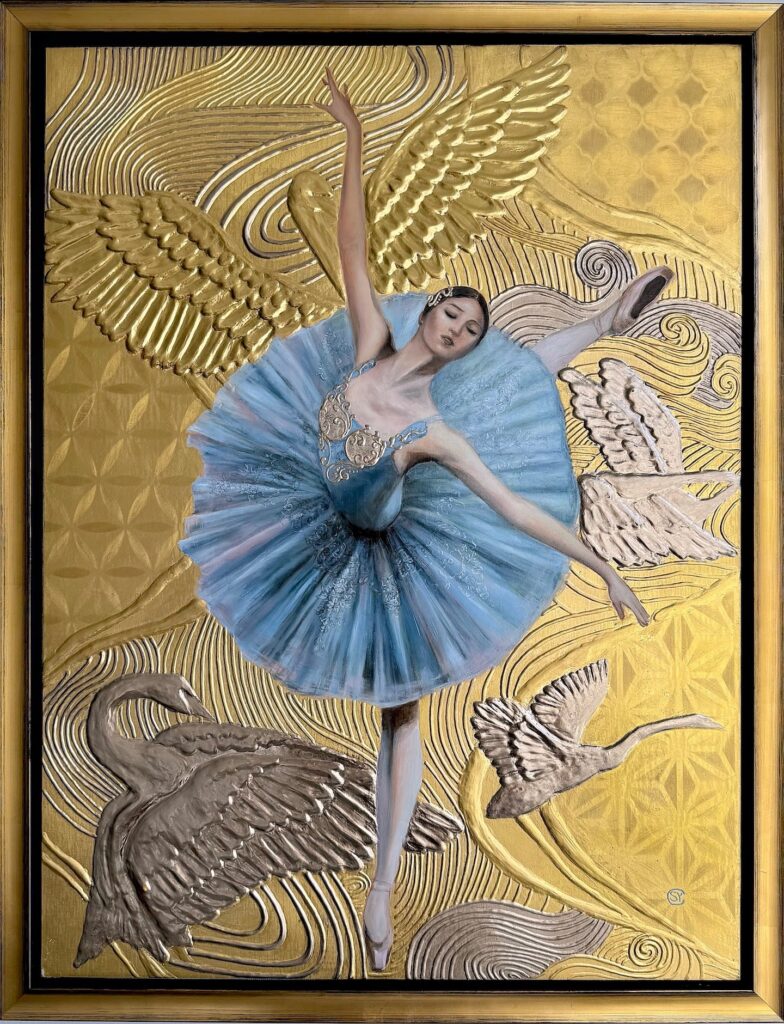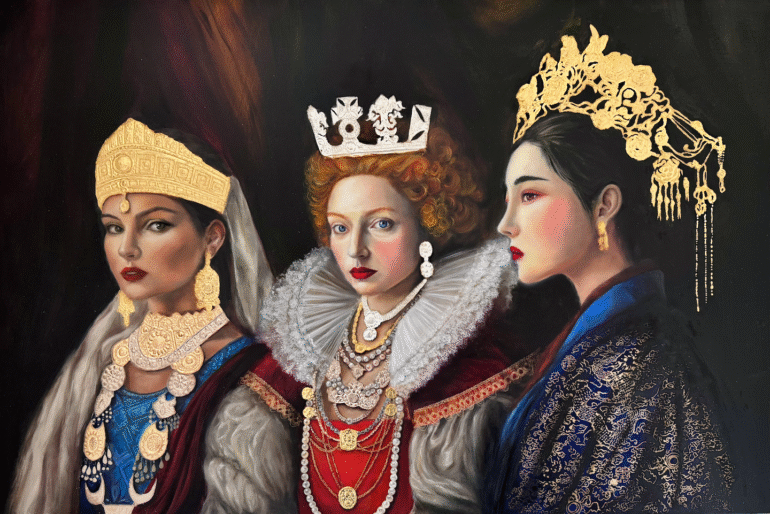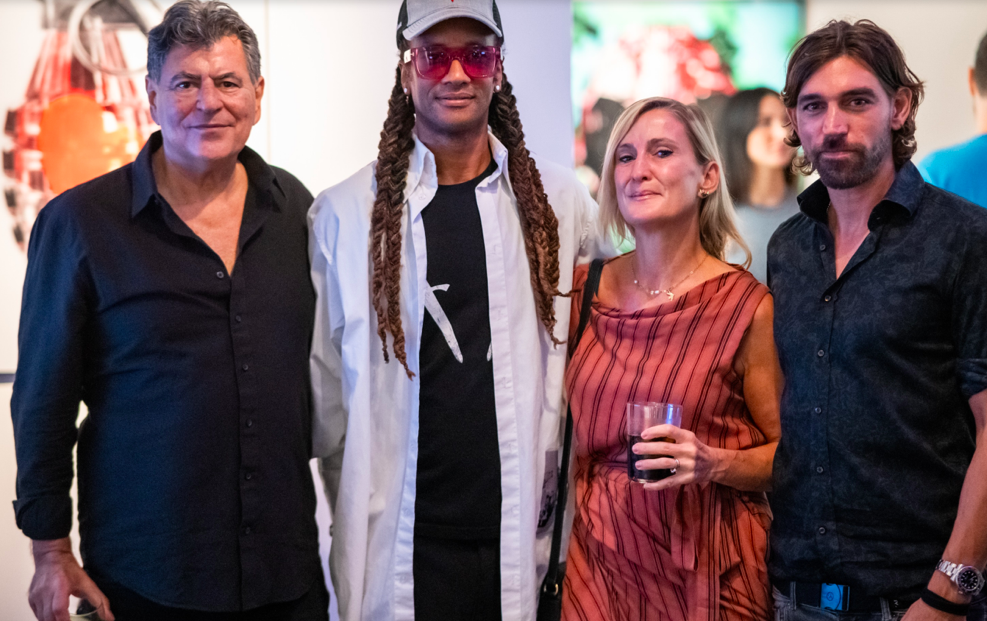Shirley Yang Crutchfield’s creative journey is anything but conventional. Once immersed in the fast-paced world of tech startups as a successful founder, Crutchfield made a bold leap into the art world—trading code for canvas. Today, she is an emerging voice in contemporary figurative painting, known for her richly detailed portraits that blend the classical beauty of Renaissance technique with a distinctly modern vision. Her art tells powerful, intimate stories of extraordinary women of history, from Warriors to Queens and Empresses.
In this conversation, Culturalee explores how Crutchfield’s unique path, from Silicon Valley to the studio, has shaped her perspective, her process, and her purpose as an artist committed to elevating untold narratives through timeless technique.

You began your career as a tech founder. What inspired your pivot from the fast-paced world of technology to the meditative discipline of fine art?
My career in technology has been focused on building products and cultivating audiences. The continuous thread into creating art is the nature of entrepreneurship and I draw a lot of parallels between the two, namely all of the learning, conceptualizing and tenacity needed to create something that you share with the world. Except now, rather than creating a product or an app, I’m creating artwork for myself that hopefully speaks to others through personal exploration.
After two decades in technology, I exited the company I created, helped launch a crypto currency, started a family, and decided to transition to creating art that is personal in practice and universal in scope. I recognize it is an absolute privilege to be able to invest in myself and share stories we can all relate to through the artwork.
How has your background in tech influenced your artistic process or the way you approach your studio practice?
What comes to mind is relentless hard work and a passion to “make it work.” I adopt the traditional Italian water gilding technique of making wood look like gold, which required lots of learning from gilding masters around the world, experiments with raw materials, and a significant amount of trial and error, which is something I’m familiar with given my experience building my own tech company.
The other influence is to solve problems in multiple ways. I realize there are many paths an artist can take, looking at both traditional and new creative ways to get my art out there. Success to me is to chart a path that best suits my own lifestyle and goals.
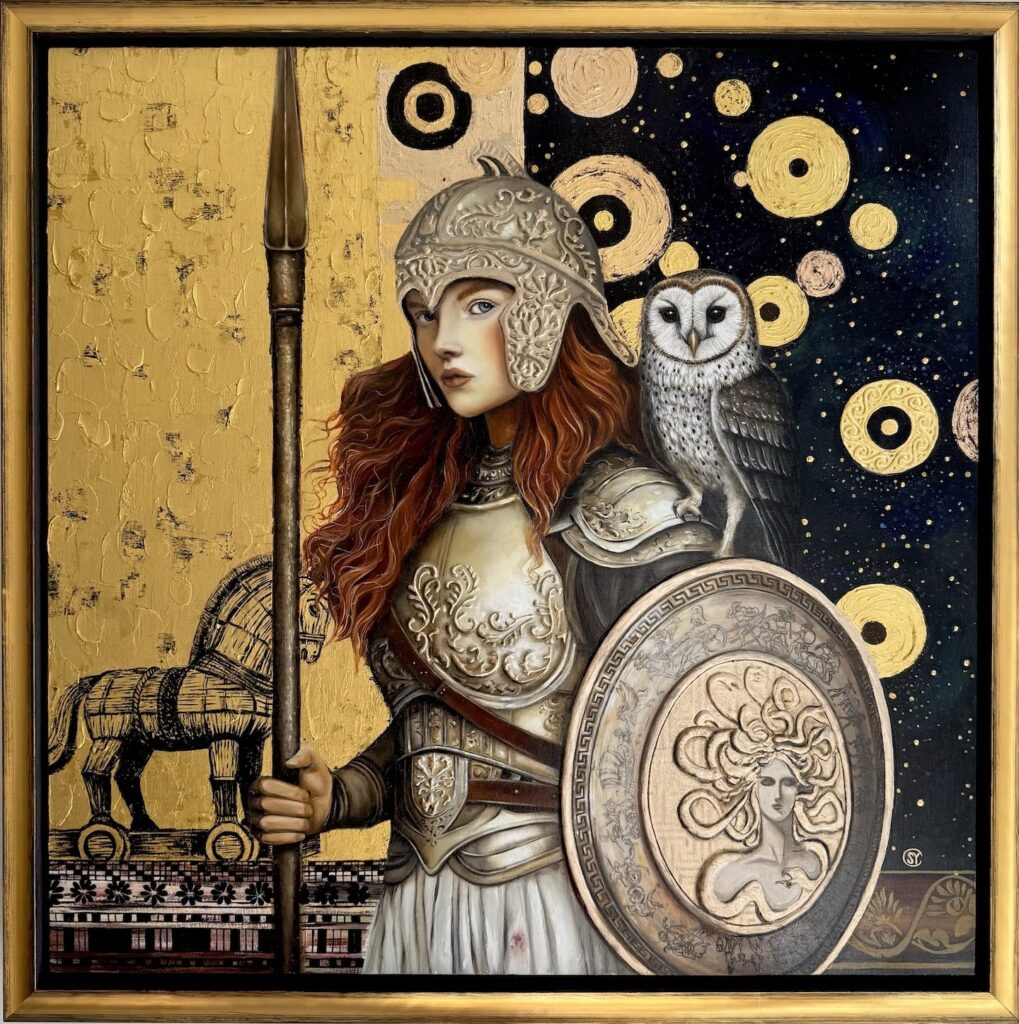
You’ve become known for modernizing Renaissance painting techniques. Can you walk us through how you reinterpret these classical methods for a contemporary context?
I use water gilding, a centuries-old technique involving layers of gesso, clay bole, and 24K gold leaf and layer it with oil painting. Historically, gilding was reserved for the divine or noble. I reinterpret that by using it to honor both modern and historic women: not saints in the traditional sense, but real icons of grit, grace, and glory. The method hasn’t changed much, but the context has. I’m not recreating relics, I’m reimagining reverence.
What draws you to the Renaissance era, and what do you think it offers today’s viewers when revived through a modern lens?
What draws me to the Renaissance is its reverence for beauty, discipline, and craftsmanship, values I feel we’re at risk of losing in today’s fast, hyper-digital world. The artists of that era didn’t just create, they dedicated themselves to mastery. They understood that technique and soul were inseparable. That speaks to me deeply.
Reviving these traditions for me is both a celebration and a responsibility. We remember history not to dwell in it, but to stand on the shoulders of giants as we move forward. When I gild a portrait using the same techniques that once illuminated altarpieces, I’m paying homage to those who came before while reimagining what and who deserves to be seen as sacred today.
Through a modern lens, the Renaissance offers viewers a moment of pause. A space to feel awe again. And a reminder that excellence takes time, that beauty can hold truth, and that honoring the past is part of shaping the future.
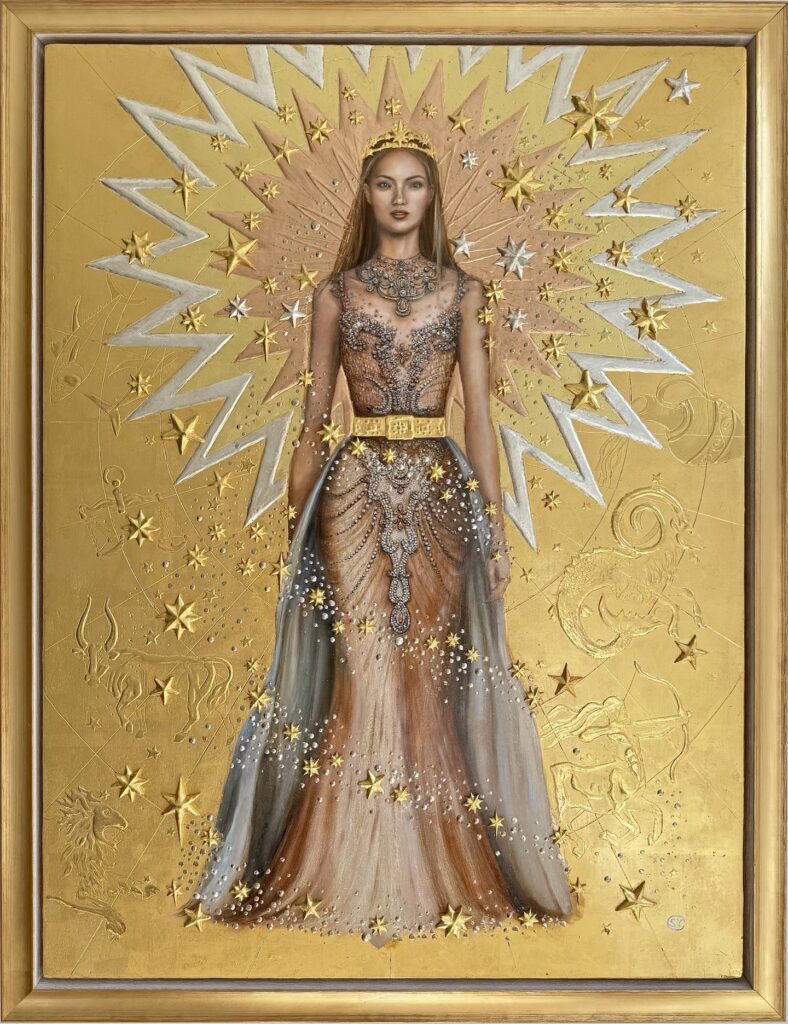
Much of your work centers on powerful, often overlooked narratives of women. How do you choose the subjects you portray, and what’s your process for shaping their stories visually?
The women in my work range from historical figures, Queens, and Warriors to contemporary heroines. I decide on these subjects because the figure is always more than what meets the eye. Often when we look at an “icon”—the prima ballerina of Swan Lake, an admired public figure, or someone not famous but who’s great at what they do—we don’t see the hidden struggles and challenges they had to overcome time and time again to get to where they are now. My work is both a tribute to that dedication and an invitation for viewers to step toward celebrating the persistence and resilience that shape their own journeys.
Do you see your portraits of women as a form of visual activism? What message do you hope they carry for future generations?
I want my art to capture glamour at first glance, the allure that draws you in. I also want to reveal the hidden battles beneath, the grit and resilience that lie just out of sight. The icons I portray are vastly more than what you see at first sight.
My work stands for the women who’ve won, lost, risen, and persisted with unearthly tenacity. Women who’ve stepped boldly into the spotlight, owning their space, tall and unshakable.
There’s a strong emotional current in your work—almost like a quiet rebellion. How do you balance technical precision with storytelling and feeling?
Technical precision gives my work structure, but emotion is what gives it life. I use gilding not just as decoration but also as symbolism. Gold becomes a halo, a shield, a legacy. Some intentional elements may include the posture of a figure, the shapes that frame her, the textures that hint at history and resilience.
Color, attire, and ornamentation are also part of the narrative. For example, in A Star is Born, at the top is an art deco pattern inspired by Erté, which serves as the anchor of this superstar. She is at the center of a star map and surrounded by constellations. In Pallas Athene, the Trojan horse and drawings on her shield allude to the epic battles her story is intertwined with.
These visual cues allow me to tell layered stories where beauty is not an end but a language for expressing struggle, triumph, and quiet defiance. It’s a balance between control and emotion that I’m seeking.
You’ve described your painting practice as a kind of “slow resistance.” What does that term mean to you, especially in today’s hyper-digital world?
It means choosing presence. In an era that celebrates immediacy, I’m drawn to rituals that require time, patience, and devotion. Gilding is fragile, you can’t rush it. A fingerprint or even having the air on in the studio can ruin the process. It forces you to listen and notice. That in itself feels radical. My work is a quiet refusal to flatten the human experience into bite-sized content. It’s about remembering that meaning often hides in the slow and the seen.
Your work bridges vastly different worlds—Silicon Valley and classical painting. How do you navigate those identities, and do they ever feel at odds?
I see both can be competitive environments. In tech, I learned the importance of creative problem-solving, building from scratch, and carving out space where none existed. These are transferable skills that inform how I approach my art career. Whether launching a product or a portrait series, the mindset is similar: find a niche, test and learn, know the right people, improve indefinitely.
I believe there is a lot of freedom for entrepreneurs to thrive in the art world. You can carve your own non-linear path to success.
What’s next for you? Are there new techniques, narratives, or communities you’re eager to explore through your art?
I’m exploring collaborations across luxury fashion, design, and heritage brands, integrating fine art and the message it brings into the art of living.
